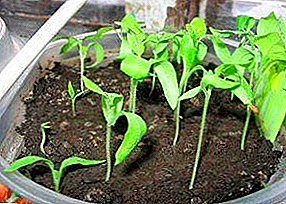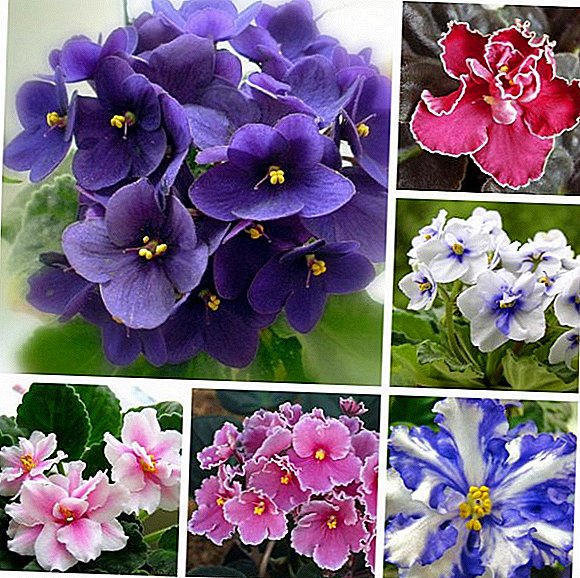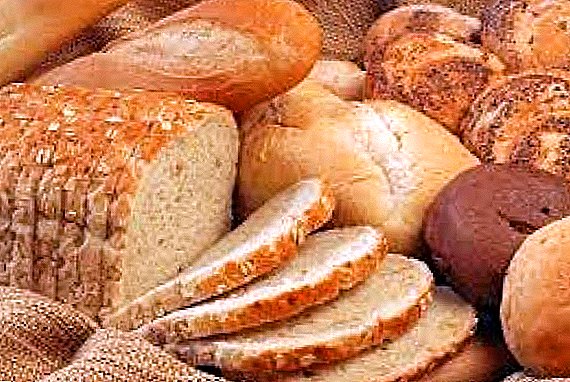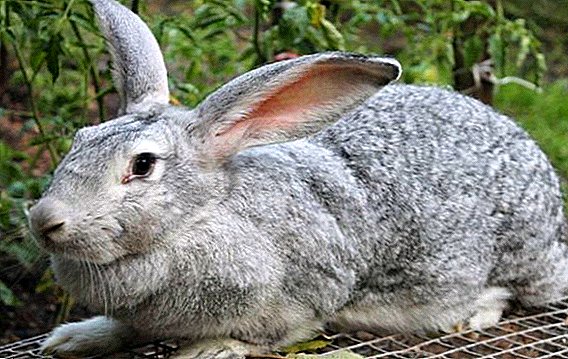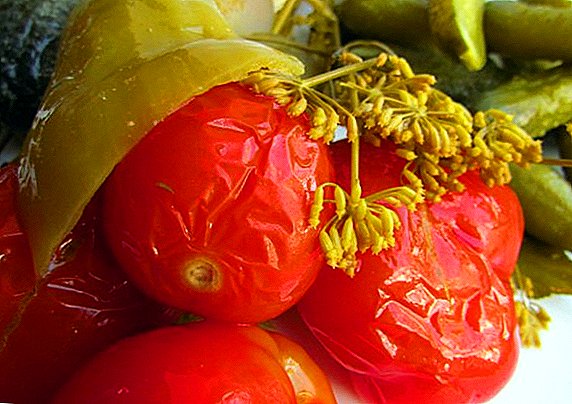
Hybrid geranium is a perennial plant that is very often grown at home. In the care culture is picky, but for abundant and prolonged flowering, you must comply with a number of conditions and requirements. This article will tell you about the most popular varieties of hybrid geraniums, about the process of planting, about caring and pests and diseases that can threaten the plant.
Botanical description and history
Hybrid geranium is a frost-resistant plant with the appearance of a shrub. The flower is home to South Africa, where there are different types of climate: Mediterranean, tropical, subtropical, temperate.
The history of the origin of hybrid geranium is not fully understood. It is only known that in the 17th century, mariners became interested in this culture and brought it first to Europe and then to Russia.
Appearance
The peculiarity of the hybrid geranium is that it can take a variety of shades: from white to maroon. And all her tones are muffled. The most popular are the following colors of buds:
- pink;
- Violet;
- blue.
Reference! The leaves can be rounded, palmarine-dissected and pinnate. The height of the bush reaches 20-60 cm.
Popular varieties
Patricia

it the plant is unpretentious in the care, and its height reaches 60 cm. Flowering occurs in the second half of June. Geranium shape resembles a hemisphere. Inflorescences of small size.
We invite you to watch the video about Patricia Geranium:
Blue blood

This is a perennial frost-resistant culture. The flowers are inconspicuous and have a pale pink color. Although you can see geraniums with blue and purple buds. Sheet plate rounded or pinnate. The plant blooms for a long time, from May to September. The height of the bush is 50-60 cm.
We invite you to watch the video about the Blue Blood geranium:
Roseanna

it the plant is valued by florists due to unpretentious, long flowering, durability to diseases and pests, and even for winter hardiness. With minimal care, Rosanna blooms from late May until the first frost in October.
We invite you to watch the video about the geranium Rosanna:
Starman

The height of this plant reaches 50 cm, the color of flowers is purple with burgundy veins. Leaves are rounded or pinnate. The height of the bush reaches 30 cm.
Where and how to plant it?
When growing a hybrid geranium, you need to think in advance about the place of its planting.. It should be well lit, but better than a penumbra.
- Before planting the plants need to perform small pits on the bottom of which lay a mixture of sand, soil and peat, taken in equal proportions.
- After the plant is placed in the recess and bury, not ramming.
- In the first 2-3 days after planting, geranium must be watered more often.
Lighting and location
When growing a hybrid geranium, choose a well-lit place. At home, windows of the western and eastern directions are perfect. In summer, the plant can be taken out onto the street, balcony or terrace. If you have a flower on the south window, then in the daytime you have to take care of the shading.
Soil requirements
Hybrid geranium grows well and develops in fertile and well-drained soil with a neutral pH. The composition of the soil mixture should include such components:
- turf ground;
- peat;
- humus;
- sand.
All components taken in equal proportions.
How to care?
Temperature conditions
In summer time Geranium prefers moderate heat, so the temperature should be 17-23 degrees Celsius. If the temperature stays firmly within 12 degrees of heat, then geranium does not bloom. Although too high a temperature adversely affects flowering.
Watering
Hybrid geranium is a drought-resistant plant, so it is better not to pour than to pour. Watering in the summer to perform as the drying of the top layer of soil. In winter, humidification is rarely carried out, but it is impossible to bring to the full drying of the soil. Use for watering warm and separated water.
Top dressing
Make food for geranium preferably with each irrigation, only reducing the dosage. If you water the flower every day, then the weekly rate of feeding should be divided by 7-10. In winter, fertilizer is not required. In the spring it is necessary to use compounds containing nitrogen.
Reference! Young plants that have not yet bloomed, suitable universal universal preparations. Before the onset of flowering, apply fertilizers with a high concentration of potassium.
Pruning
After the flowering of the plant is completed, pruning is carried out, as a result of which the apical cuttings are cut and used for rooting. The cut is treated with a fungicide, sprinkled with activated carbon powder. Old leaves, which remained on the plant, do not need to be removed yet, and wait until the young shoots begin to grow.
Common diseases and pests
The following diseases and pests affect hybrid geraniums:
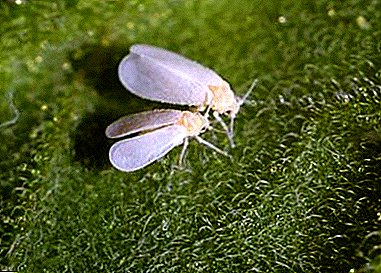 Gray rot. This is one of the most dangerous diseases, which can be recognized by the presence of gray plaque on the leaves and other parts of the flower. Moisture, waterlogging, poor air ventilation can affect the development of the disease. Mostly gray mold is formed during the winter holidays. The affected plant cannot be saved anymore, therefore it is necessary to get rid of it, and the soil should be disinfected.
Gray rot. This is one of the most dangerous diseases, which can be recognized by the presence of gray plaque on the leaves and other parts of the flower. Moisture, waterlogging, poor air ventilation can affect the development of the disease. Mostly gray mold is formed during the winter holidays. The affected plant cannot be saved anymore, therefore it is necessary to get rid of it, and the soil should be disinfected.- Rust. You can recognize it by concentric yellowish top and brown bottom spots on the sheet plate.
- Rotting stalk. Occurs as a result of soil moisture. Manifests a disease in the form of dark depressed spots at the base of the stem.
- Verticillary wilting. This is a fungal disease that damages the plant's conductive system. Differs in gradual yellowing and withering of a plant, does not give in to treatment.
- White fly. When buying a plant, you must carefully inspect the lower part of the leaf for the presence of white butterflies or their larvae.
- Mealybug. This insect leaves in the axils of the leaves and on the stalks of clusters that look like pieces of white cotton.
We invite you to watch a video about geranium pests:
We invite you to watch the video about the geranium diseases:
Breeding features
Hybrid geranium breeds in three ways.: seeds, cuttings and division of the bush.
Seeds
This breeding method is the most difficult and time consuming. Using it, geranium loses its varietal characteristics, so breeders often use seed propagation.
Procedure:
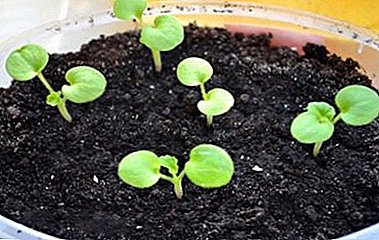 Prepare fresh seeds, as with long-term storage, they lose their germination.
Prepare fresh seeds, as with long-term storage, they lose their germination.- To collect the seeds, it is necessary to prepare small pieces of cloth and wrap the inflorescence. Due to this method of collecting the seeds will remain in integrity and not scatter around.
- It is necessary to sow planting material in August or in November.
- Sow seeds in a pot or container filled with fertile soil.
- After that, cover the container with plastic and set in a warm room.
- Caring for seedlings consists of watering and airing.
- As soon as 3 leaves are formed, the plant can be transplanted into a separate pot.
- If you plant seeds immediately in open ground, then do it in April.
Dividing bush
This method is the easiest and most common, as it allows you to give a new life to a new plant and update the old one.
The division of the rhizomes should be carried out in early spring or late summer. To do this, carefully remove the plant, focusing on the growth buds. If they are in normal condition, they should be dense, without rot and drying out. Divide the bush into several parts, shake the old soil from the roots and plant the plants separately.
Cuttings
This method is also very popular and uncomplicated.
Procedure:
- Take 2-3 young shoots with leaves from a mature bush.
- Place the cuttings in a glass of water and leave in a warm place.
- After 3 weeks, the cuttings will take root, after which they can be planted in separate pots.
- You can not wait when the roots are formed, and treat them with a special solution for growth and land in the ground.
Hybrid geranium is a beautiful plant that is suitable not only for growing in a pot, but also for open country. To do this, it is important to maintain optimum humidity, temperature and regularly care for the flower.


 Gray rot. This is one of the most dangerous diseases, which can be recognized by the presence of gray plaque on the leaves and other parts of the flower. Moisture, waterlogging, poor air ventilation can affect the development of the disease. Mostly gray mold is formed during the winter holidays. The affected plant cannot be saved anymore, therefore it is necessary to get rid of it, and the soil should be disinfected.
Gray rot. This is one of the most dangerous diseases, which can be recognized by the presence of gray plaque on the leaves and other parts of the flower. Moisture, waterlogging, poor air ventilation can affect the development of the disease. Mostly gray mold is formed during the winter holidays. The affected plant cannot be saved anymore, therefore it is necessary to get rid of it, and the soil should be disinfected. Prepare fresh seeds, as with long-term storage, they lose their germination.
Prepare fresh seeds, as with long-term storage, they lose their germination.

